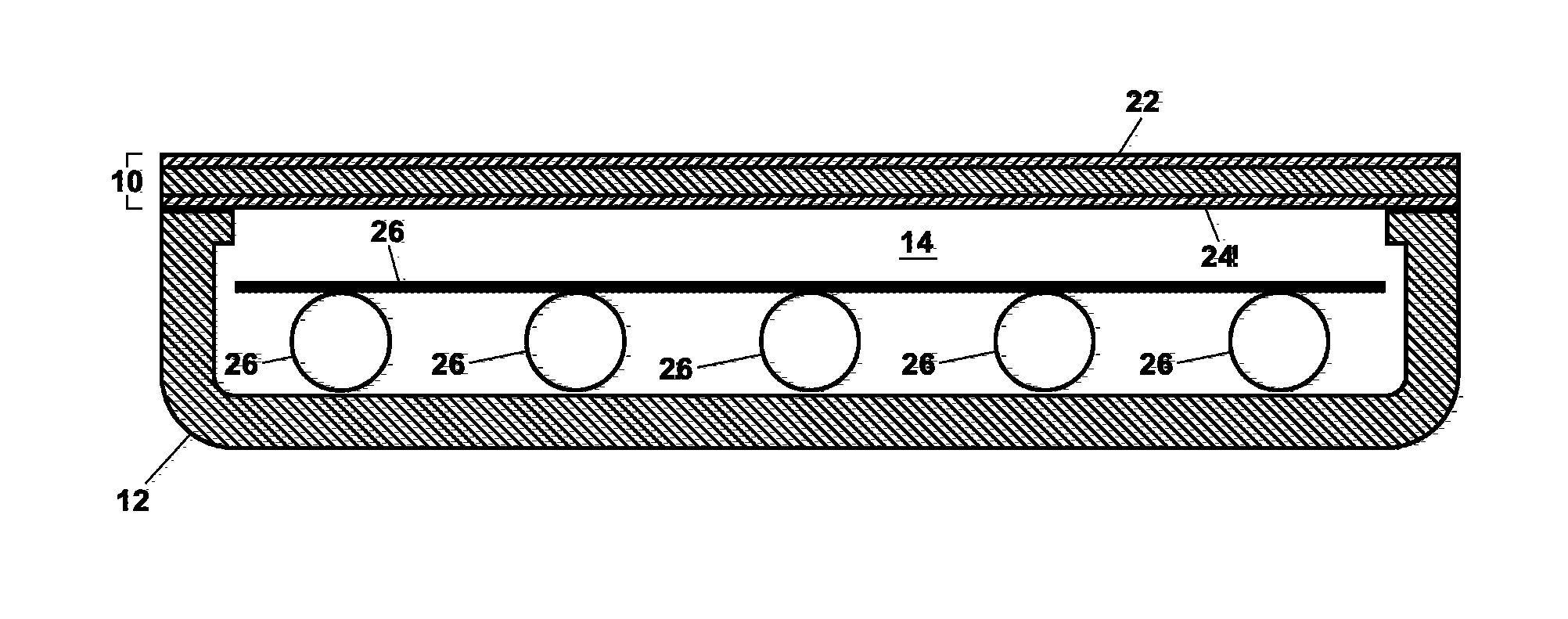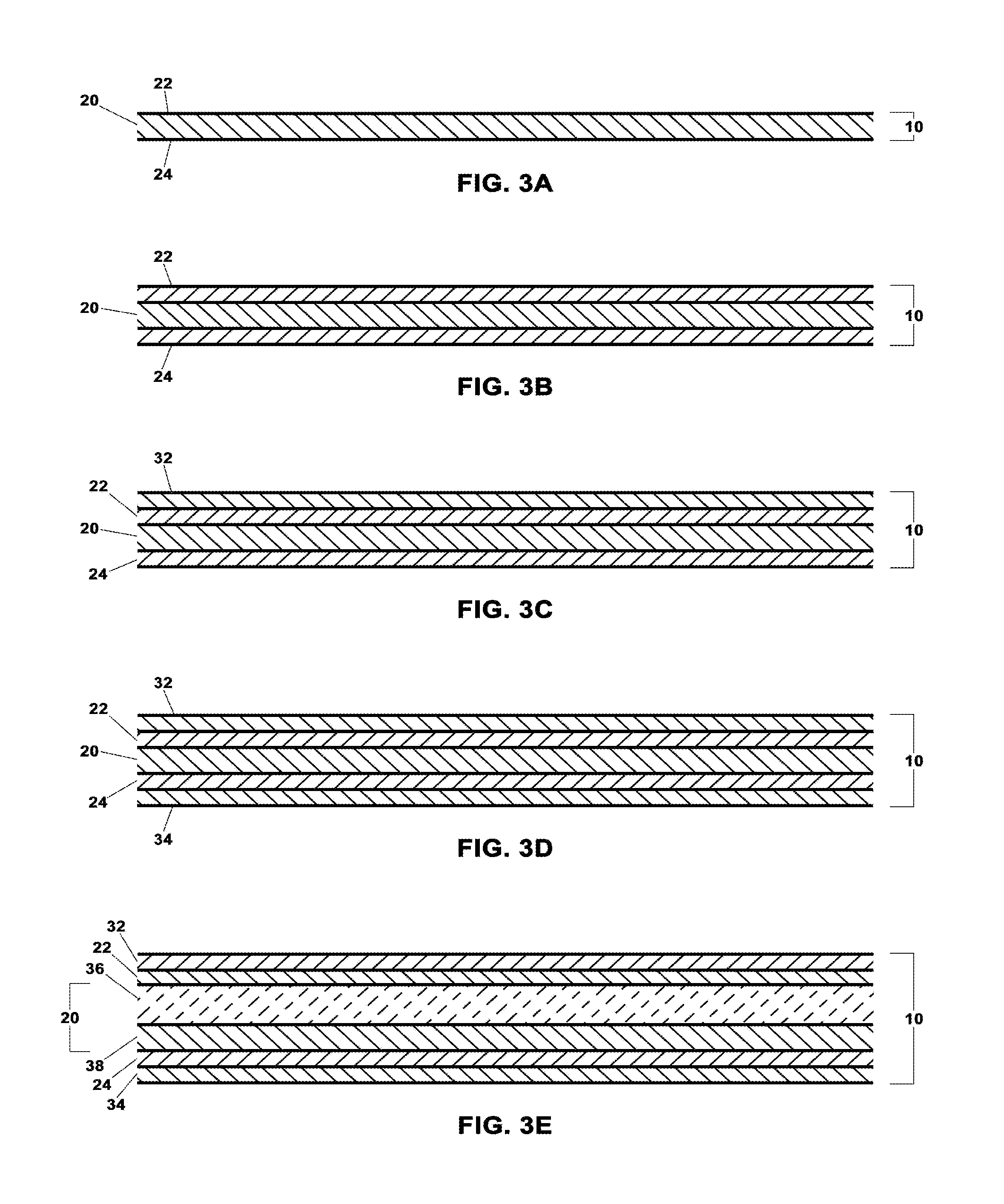Solar collector comprising an opaque cover
a solar collector and opaque cover technology, applied in the field of solar collectors, can solve the problems of poor edge strength, high cost of shipping, and difficult handling of flat-plate solar collectors, and achieve the effects of high solar energy absorption and high infrared emittan
- Summary
- Abstract
- Description
- Claims
- Application Information
AI Technical Summary
Benefits of technology
Problems solved by technology
Method used
Image
Examples
Embodiment Construction
[0031]Turning now to FIG. 1, the present invention is directed to a solar collector comprising an opaque cover 10 disposed to receive incident solar energy and coupled to an upper portion of a housing 12. A cross-sectional view of one embodiment, taken at section line 2-2 of FIG. 1, is illustrated in FIG. 2. The opaque cover 10 preferably comprises a planar structure but can also be dome-shaped, corrugated, or any other shape suitable for receiving incident solar energy and providing for structural integrity under anticipated loads. The housing 12 may be of any shape and construction suitable to isolate an absorber 26 from ambient air, provided that coupling of the opaque cover 10 to an upper portion of the housing 12 defines an at least substantially airtight enclosure 14. The absorber 26 is disposed within the enclosure 14 in an opposing spaced apart relationship with the opaque cover 10.
[0032]The present invention is directed to a solar collector that operates by a fundamentally ...
PUM
| Property | Measurement | Unit |
|---|---|---|
| radius | aaaaa | aaaaa |
| pressure | aaaaa | aaaaa |
| temperatures | aaaaa | aaaaa |
Abstract
Description
Claims
Application Information
 Login to View More
Login to View More - R&D
- Intellectual Property
- Life Sciences
- Materials
- Tech Scout
- Unparalleled Data Quality
- Higher Quality Content
- 60% Fewer Hallucinations
Browse by: Latest US Patents, China's latest patents, Technical Efficacy Thesaurus, Application Domain, Technology Topic, Popular Technical Reports.
© 2025 PatSnap. All rights reserved.Legal|Privacy policy|Modern Slavery Act Transparency Statement|Sitemap|About US| Contact US: help@patsnap.com



